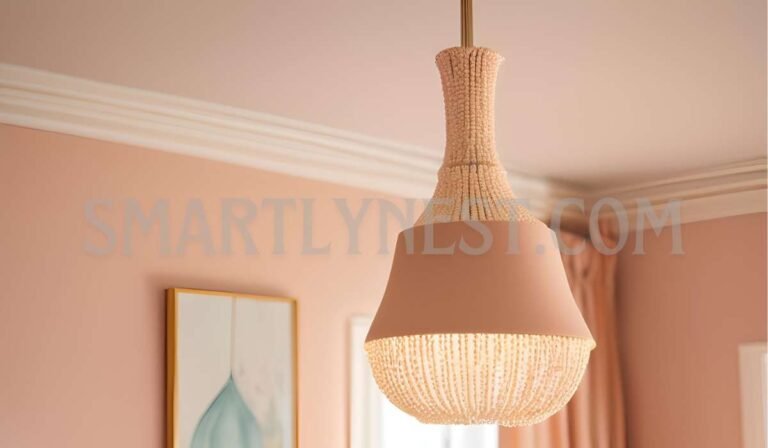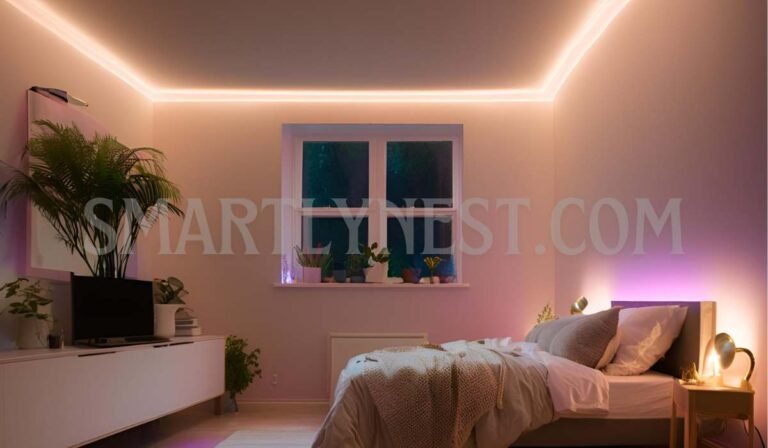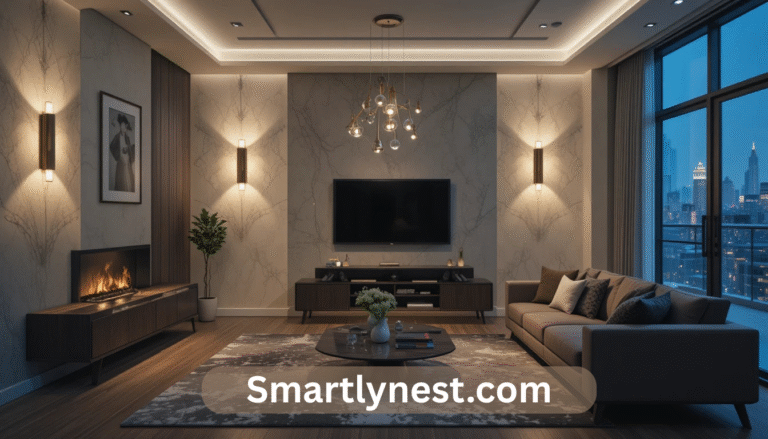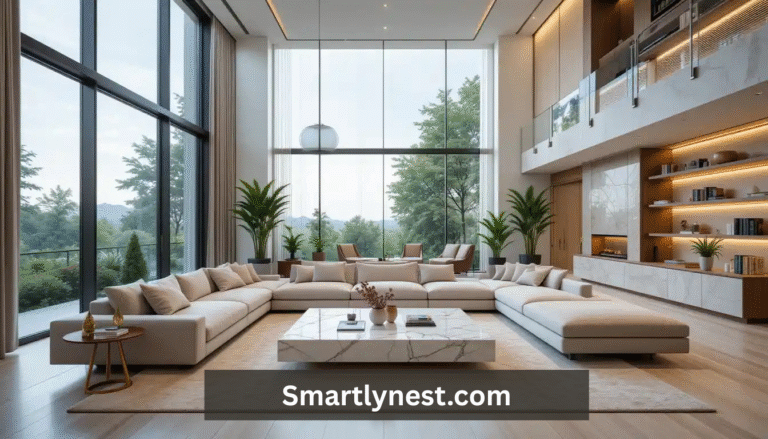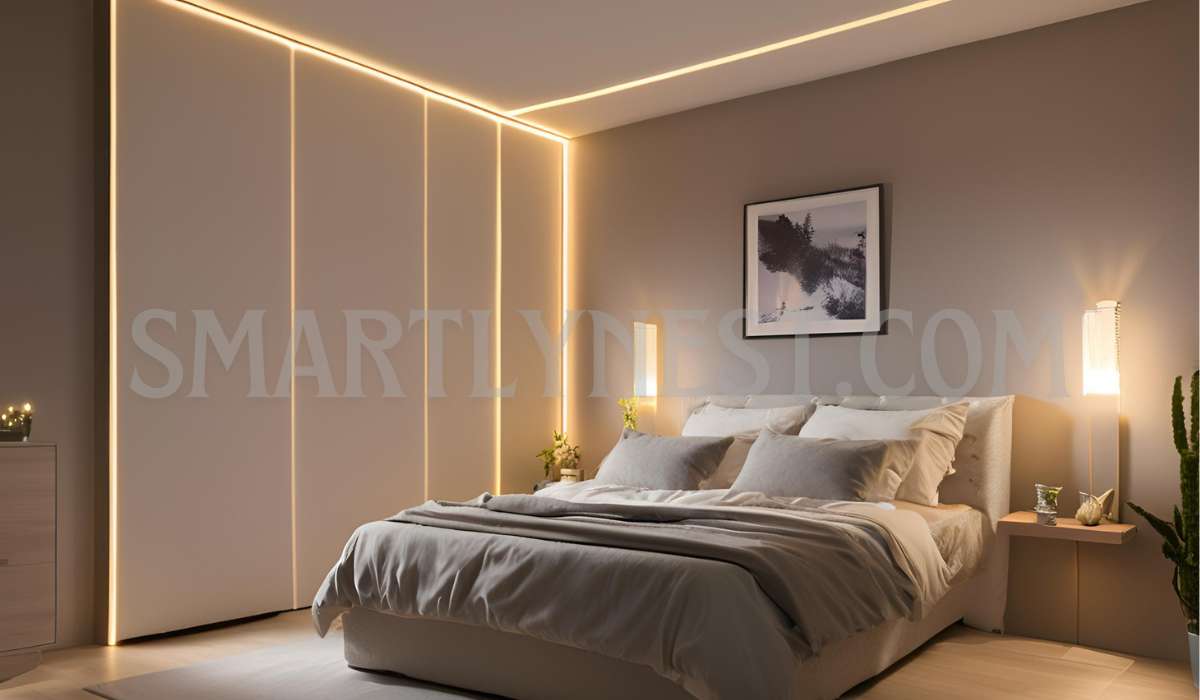
Creating a tranquil and inviting bedroom is essential for restful sleep and relaxation. One of the most effective ways to achieve this is through the strategic use of indirect lighting. Unlike direct lighting, which shines directly into the eyes, indirect lighting diffuses light to create a soft, ambient glow that enhances the room’s ambiance. In this comprehensive guide, we’ll explore 29 innovative indirect lighting ideas to transform your bedroom into a serene sanctuary.
Introduction
The Power of Bedroom Lighting
Lighting plays a pivotal role in setting the mood and functionality of a bedroom. It can influence your sleep quality, the room’s aesthetic, and even your overall well-being. Proper lighting can make a small space feel larger, highlight architectural features, and create a cozy atmosphere that promotes relaxation.
What is Indirect Lighting?
Indirect lighting refers to light sources that are concealed or reflected off surfaces, rather than being directly visible. This technique creates a soft, diffused illumination that reduces harsh shadows and glare, making the room feel more inviting and comfortable.
Understanding Indirect Lighting
Definition and Principles
Indirect lighting involves positioning light fixtures so that light is reflected off walls, ceilings, or other surfaces before illuminating the space. This method ensures that the light is evenly distributed, providing a consistent and pleasant glow without direct exposure to the light source.
Direct vs. Indirect Lighting
| Feature | Direct Lighting | Indirect Lighting |
|---|---|---|
| Light Source Visibility | Visible and often prominent | Concealed or hidden |
| Light Distribution | Focused and directional | Soft and diffused |
| Ambiance | Can be harsh or bright | Creates a calm and relaxing atmosphere |
| Best Uses | Task lighting, reading lamps | General ambient lighting, accentuating decor |
Benefits of Indirect Lighting in Bedrooms
- Enhanced Ambiance: Creates a soothing and peaceful environment.
- Aesthetic Appeal: Highlights architectural features and decor without overwhelming the space.
- Energy Efficiency: Often uses LED strips and energy-efficient bulbs.
- Versatility: Suitable for various design styles, from modern to traditional.
Planning Your Bedroom’s Indirect Lighting
Assessing Your Bedroom’s Layout and Existing Lighting
Before diving into lighting ideas, evaluate your bedroom’s current setup. Take note of natural light sources, existing fixtures, and the room’s architectural features. Understanding the layout will help you determine where to place additional light sources for maximum effect.
Determining the Purpose and Mood
Decide what atmosphere you want to create. Whether it’s a cozy retreat, a minimalist haven, or a luxurious escape, your lighting choices should align with your desired mood. Consider factors like color temperature, brightness, and the types of activities you’ll be performing in the room.
Choosing the Right Color Temperature
Color temperature, measured in Kelvin (K), affects the room’s ambiance. For a relaxing bedroom, opt for warmer tones (2700K-3000K) that emit a soft, yellowish glow. Cooler temperatures (4000K-5000K) are better suited for task lighting but can be incorporated subtly with indirect methods.
29 Ingenious Indirect Lighting Ideas
1. Cove Lighting
Cove lighting involves installing LED strips along the perimeter of the ceiling, often hidden behind molding or coving. This creates a continuous, soft glow that highlights the room’s architectural details.
- Installation Tips:
- Use flexible LED strips for easy installation around corners.
- Choose dimmable lights to adjust the brightness according to your mood.
- Benefits:
- Provides even light distribution without visible fixtures.
- Enhances the perception of ceiling height.
2. Under-Bed Lighting
Illuminate the area beneath your bed with LED strips to create a floating effect. This not only adds a modern touch but also provides subtle lighting for nighttime navigation.
- DIY Ideas:
- Attach adhesive LED strips along the bed frame.
- Use smart bulbs to change colors based on your preference.
3. Behind Headboard Illumination
Adding backlighting to your headboard can create a cozy and intimate atmosphere. This technique adds depth and highlights the headboard’s design.
- Options:
- Use LED panels or strips mounted behind the headboard.
- Incorporate fabric-diffused lights for a softer glow.
4. Wall Niches with Hidden Lights
Create wall niches and install recessed lighting to showcase artwork or decorative items. This not only adds visual interest but also provides targeted illumination.
- Design Tips:
- Place lights at different heights to create layers of light.
- Use adjustable fixtures to highlight specific pieces.
5. Floating Shelves with Integrated Lighting
Combine storage and lighting by installing floating shelves with built-in LED lights. This provides both functionality and ambiance.
- Benefits:
- Highlights decorative items on the shelves.
- Adds a modern and sleek look to the room.
6. Perimeter Ceiling Lighting
Install indirect lighting around the room’s perimeter to create a spacious and open feel. This method evenly distributes light without overwhelming the space.
- Implementation:
- Use LED tape along the edges of the ceiling.
- Combine with other lighting techniques for a layered effect.
7. Floor-Level Baseboard Lighting
Enhance safety and ambiance by installing low-level lighting along the baseboards. This is ideal for minimalist designs and provides a subtle glow.
- Advantages:
- Prevents tripping in the dark.
- Adds a contemporary touch to the room.
8. Indirect Pendant Lighting
Choose pendant lights that diffuse light upwards, providing indirect illumination. Position them strategically to complement the room’s layout.
- Selection Tips:
- Opt for fixtures with frosted or translucent shades.
- Use multiple pendants for balanced lighting.
9. Backlit Mirrors
Adding a soft glow behind mirrors enhances their appearance and provides practical lighting for tasks like dressing or grooming.
- DIY Tips:
- Use LED strips around the mirror’s perimeter.
- Incorporate dimmers for adjustable brightness.
10. Curtain Cove Lighting
Install lights behind curtains to create a soft, ethereal glow around your windows. This enhances window treatments and adds depth to the room.
- Installation Ideas:
- Use hidden LED strips within the curtain rod or track.
- Choose color-changing bulbs for a customizable ambiance.
11. Recessed Ceiling Panels
Create a modern and sleek look with recessed ceiling panels illuminated by hidden lights. These panels can be customized to fit your bedroom’s style.
- Customization Options:
- Incorporate different shapes and sizes for visual interest.
- Use programmable lights for dynamic effects.
12. Indirect Wall Sconces
Select sconces that provide upward or downward lighting to create a balanced illumination. Proper placement is key to achieving the desired effect.
- Placement Tips:
- Position sconces at eye level or higher for optimal reflection.
- Use dimmable options to adjust the light intensity.
13. LED Strip Lighting Behind Furniture
Add depth and dimension by installing LED strips behind dressers, desks, or other furniture pieces. This highlights the furniture and adds a subtle glow to the room.
- Benefits:
- Enhances the room’s aesthetic without being intrusive.
- Provides functional lighting for specific areas.
14. Under-Nightstand Lighting
Provide subtle bedside illumination by installing lights under your nightstands. This offers convenience without disturbing your partner.
- Installation Tips:
- Use battery-operated LED lights for easy setup.
- Choose motion-activated lights for added functionality.
15. Crown Molding with Integrated Lighting
Combine traditional crown molding with modern lighting by integrating LED strips. This blend of old and new adds sophistication to your bedroom.
- Advantages:
- Highlights the room’s architectural features.
- Provides a seamless and elegant lighting solution.
16. Indirect Lighting in Tray Ceilings
Accentuate tray ceilings with hidden lights to create a dramatic and luxurious effect. This technique adds depth and character to the room.
- Implementation Ideas:
- Use recessed lights within the tray for a subtle glow.
- Combine with color-changing LEDs for dynamic lighting.
17. Backlit Wall Panels
Create a focal point with illuminated wall panels. This adds texture and interest while providing indirect lighting.
- Material Options:
- Use wood, fabric, or acrylic panels for different effects.
- Incorporate patterns or designs for added visual appeal.
18. Under-Floating Desk Lighting
Enhance your workspace aesthetics with indirect lighting beneath a floating desk. This provides both functional and ambient light.
- Benefits:
- Reduces eye strain during nighttime work.
- Adds a modern and clean look to the room.
19. Integrated Bed Frame Lighting
Choose beds with built-in lighting features or retrofit existing frames with LED strips. This integrates lighting seamlessly into your bedroom furniture.
- Customization Ideas:
- Use programmable LEDs for personalized lighting schemes.
- Incorporate remote controls for easy adjustments.
20. Indirect Lighting Behind TV Units
Reduce eye strain and enhance viewing experience by installing backlighting behind your TV unit. This creates a comfortable and immersive environment.
- Color Choices:
- Use warm tones for a relaxed ambiance.
- Experiment with dynamic colors for a vibrant look.
21. Shelf Cove Lighting
Illuminate display shelves with hidden lights to highlight your favorite items. This adds a touch of elegance and draws attention to your decor.
- Tips for Even Light Distribution:
- Use multiple light sources for larger shelves.
- Choose adjustable fixtures to direct light precisely.
22. Under-Cabinet Lighting in Bedroom Wardrobes
Improve visibility in closets with indirect lighting beneath cabinets. This enhances functionality while maintaining a clean look.
- Sensor Options:
- Install motion sensors for automatic lighting.
- Use touch-activated switches for convenience.
23. Floating Ceiling Panels with Perimeter Lighting
Create a contemporary look with suspended ceiling panels illuminated by perimeter lighting. This adds a futuristic touch to your bedroom.
- Lighting Options:
- Use white LEDs for a clean and bright effect.
- Incorporate colored lights for a more dynamic ambiance.
24. Indirect Lighting in Reading Nooks
Design cozy reading corners with soft indirect lighting. This provides a comfortable and inviting space for relaxation and reading.
- Lamp Choices:
- Use wall-mounted lamps with diffused shades.
- Incorporate floor lamps with upward-facing lights.
25. Backlit Canopy Beds
Enhance canopy bed designs with integrated lighting for a luxurious and romantic feel. This adds elegance and a touch of glamour to your bedroom.
- Safety Considerations:
- Ensure proper electrical installations to prevent hazards.
- Use low-voltage LED lights for safety and efficiency.
26. Under-Step Lighting for Bedroom Lofts
Illuminate steps in lofted bedrooms with indirect lighting. This ensures safety while adding a stylish element to the space.
- Implementation Tips:
- Use LED strips along the edges of each step.
- Choose durable and slip-resistant lighting solutions.
27. Accent Lighting for Architectural Features
Highlight unique room elements such as arches, columns, or built-in furniture with indirect accent lighting. This draws attention to architectural details and adds depth to the room.
- Fixture Selection:
- Use adjustable spotlights for precise lighting.
- Choose fixtures that complement the room’s design style.
28. Indirect Lighting Behind Wall-Mounted Artwork
Enhance your artwork with subtle backlighting. This not only highlights the pieces but also adds a sophisticated touch to your bedroom.
- DIY Methods:
- Use LED strips mounted behind frames.
- Incorporate hidden spots for an uncluttered look.
29. Smart Indirect Lighting Solutions
Embrace technology with smart lighting systems that offer customizable options. Control your bedroom’s lighting through voice commands or smartphone apps for ultimate convenience.
- Features:
- Schedule lighting scenes for different times of the day.
- Integrate with home automation systems for seamless control.
Tips for Implementing Indirect Lighting
Selecting Energy-Efficient LED Options
LED lights are the preferred choice for indirect lighting due to their energy efficiency, longevity, and versatility. They produce less heat, consume less power, and come in a variety of colors and brightness levels.
Importance of Dimmable Lights
Dimmable lights allow you to adjust the brightness to suit different moods and activities. This flexibility is crucial for creating a comfortable and adaptable bedroom environment.
Professional Installation vs. DIY
While many indirect lighting solutions can be implemented as DIY projects, some installations may require professional assistance, especially those involving electrical work. Assess your skills and the complexity of the project before deciding.
Common Mistakes to Avoid
Over-Illumination or Insufficient Lighting
Striking the right balance is key. Too much indirect lighting can make the room feel cluttered, while too little can leave it feeling dark and uninviting.
Incorrect Placement
Proper placement ensures even light distribution and prevents areas from being too bright or too dim. Plan your lighting layout carefully to avoid uneven illumination.
Ignoring Color Temperature
Choosing the wrong color temperature can affect the room’s ambiance. Stick to warmer tones for a relaxing environment and incorporate cooler lights only where necessary.
Maintenance and Care for Indirect Lighting
Cleaning Tips
Regularly clean light fixtures and surfaces to maintain the quality of light. Dust and debris can obstruct light diffusion and reduce effectiveness.
Replacing LEDs
LEDs have a long lifespan, but they will eventually need replacement. Choose high-quality LEDs to ensure longevity and consistent performance.
Troubleshooting Common Issues
Common issues include flickering lights, dimming, or complete failure. Check connections, replace faulty bulbs, and consult a professional if problems persist.
Writer’s Opinion
Incorporating indirect lighting into your bedroom design is more than just an aesthetic choice—it’s an investment in your well-being. The gentle, diffused light fosters a peaceful environment, ideal for unwinding after a long day. Moreover, indirect lighting offers unparalleled versatility, allowing you to tailor the ambiance to your exact preferences. Whether you’re highlighting architectural features or creating a cozy nook, these lighting ideas can transform your bedroom into a personal sanctuary that combines beauty with functionality.
Frequently Asked Questions (FAQ)
1. What is the difference between direct and indirect lighting?
Direct lighting involves light sources that shine directly into the eyes, providing focused illumination for tasks like reading or working. Indirect lighting, on the other hand, diffuses light through reflections off walls or ceilings, creating a softer and more ambient glow that enhances the room’s overall atmosphere.
2. Can I install indirect lighting myself, or should I hire a professional?
Many indirect lighting projects, such as installing LED strips or plug-in fixtures, can be handled as DIY projects with the right tools and instructions. However, more complex installations, especially those involving electrical wiring or ceiling modifications, may require professional expertise to ensure safety and optimal results.
3. What type of bulbs should I use for indirect lighting?
LED bulbs are the best choice for indirect lighting due to their energy efficiency, long lifespan, and versatility. They come in various color temperatures and can be dimmable, allowing for greater control over the room’s ambiance.
4. How can I control the brightness of my indirect lighting?
Using dimmable LED strips or bulbs is the most effective way to control brightness. Additionally, smart lighting systems offer advanced control options, such as remote adjustments, scheduling, and integration with voice assistants.
5. What color temperature is best for a relaxing bedroom?
Warm white light, typically ranging from 2700K to 3000K, is ideal for creating a relaxing and cozy bedroom environment. These tones mimic the natural warmth of sunlight at sunset, promoting relaxation and restful sleep.
6. Are there any safety considerations when installing indirect lighting?
Yes, safety is paramount when installing any lighting system. Ensure that all electrical connections are secure and meet local building codes. Use low-voltage LED lights where possible to reduce the risk of overheating, and always follow manufacturer guidelines for installation.
7. How do I choose the right indirect lighting idea for my bedroom?
Consider your bedroom’s layout, existing decor, and the mood you want to create. Evaluate the size of the room, the placement of furniture, and the architectural features you wish to highlight. Combining multiple indirect lighting techniques can also create a layered and dynamic lighting scheme.
8. Can indirect lighting help improve sleep quality?
Yes, indirect lighting with warm color temperatures can promote relaxation and signal to your body that it’s time to wind down, potentially improving sleep quality. Avoiding harsh, bright lights in the evening can help maintain your natural sleep cycle.
9. How do I maintain my indirect lighting system?
Regularly clean light fixtures and surfaces to prevent dust buildup. Periodically check for any loose connections or damaged bulbs and replace them as needed. If you use smart lighting systems, ensure that the software is up to date to maintain functionality.
10. What are some budget-friendly indirect lighting options?
Budget-friendly options include LED strip lights, plug-in lamp bases with hidden cords, and DIY projects using affordable materials. Shopping during sales or opting for multi-purpose fixtures can also help keep costs down while achieving effective indirect lighting.
Conclusion
Indirect lighting is a powerful tool in bedroom design, offering both aesthetic and functional benefits. By thoughtfully integrating these 29 ingenious lighting ideas, you can create a serene sanctuary that not only looks stunning but also enhances your overall well-being. Whether you’re embarking on a complete bedroom makeover or simply looking to update your lighting, these strategies provide versatile solutions to illuminate your space beautifully.


